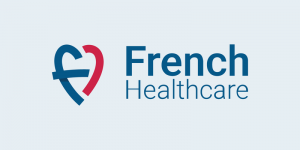Integration Of Electronic Health Records: Challenges And Consequences

Creating and keeping unique electronic records for patients at a national level is a common practice in most countries of the European Union. Although its benefits are many, it is controversial and difficult to implement since every part of healthcare has to be aligned with the same policy and go through training, specific equipment and many other steps. Can France pull this one off and be up to date with the latest trends in healthcare? Read on and find out more about it.
The Objectives
The project by its name in French was DMP which stands for dossier médical personnalisé and is nothing other than a complete electronic, digital health record for every citizen in France. Its inaugural moment was 2004 and since that moment €500 million were invested. The original objectives were several:
- The information that all doctors involved in a specific patient´s treatment would have available immediately was to be consistent and complete. No oral medical history was to be involved ever again.
- No duplicated exams, tests, investigations or prescriptions for a single patient since all that has been done in the past would be informed.
- Secure information exchange when different healthcare structures are involved in the treatment of a single case. For example, exams and tests run in different locations can be accessed in a centralized way.
- Macro data collected could be used for the prevention of society-wide vulnerabilities and health programs application. Epidemiological information, syndrome surveillance and eco-epidemiological data could be used for better prevention.
- Saving up to €3.5 million in records, prescriptions and other resources used to communicate data.
- Reduce the healthcare access inequality.
The Challenges
 The first challenges that the healthcare system faced in terms of deploying the DMP program was IT-related. Most reasons given by doctors, hospital managers and other involved personnel were related to the inefficiencies of the computer program and the time-consuming tasks involved with the loading of the data. Since the creation of the program, many managers have gone by and also internet providers but none has yet met the specifications and demands of the health care professionals.
The first challenges that the healthcare system faced in terms of deploying the DMP program was IT-related. Most reasons given by doctors, hospital managers and other involved personnel were related to the inefficiencies of the computer program and the time-consuming tasks involved with the loading of the data. Since the creation of the program, many managers have gone by and also internet providers but none has yet met the specifications and demands of the health care professionals.
In the recent past, another obstacle is that most of the responsibility is in the shoulders of General Practitioners who are the least benefited from it. Also, they don´t receive any money for taking the extra task and uploading retroactively all the patient´s records to the system. This lack of enthusiasm and of incentive caused that only around 6,000 professionals are currently using the system and by the year 2015 only 500,000 dossiers (DMP) were created over a population of 65 million people.
Information Management
 The main difference between the current day and the moment that the program was implemented 15 years ago is the data governance by the users themselves. In the current scheme, the end-user of the program decides what data is included, who can see it and when and where it will be published. For example, a patient can avoid putting on mental health records on his or her dossier and when it reaches the hands of the new practitioner, the professional will never know about those records.
The main difference between the current day and the moment that the program was implemented 15 years ago is the data governance by the users themselves. In the current scheme, the end-user of the program decides what data is included, who can see it and when and where it will be published. For example, a patient can avoid putting on mental health records on his or her dossier and when it reaches the hands of the new practitioner, the professional will never know about those records.
The challenges, benefits and consequences of DMP correct implementation are many and not to be overlooked. The entire world will be watching the turn of events for France and wishing for the best.



0 Comments